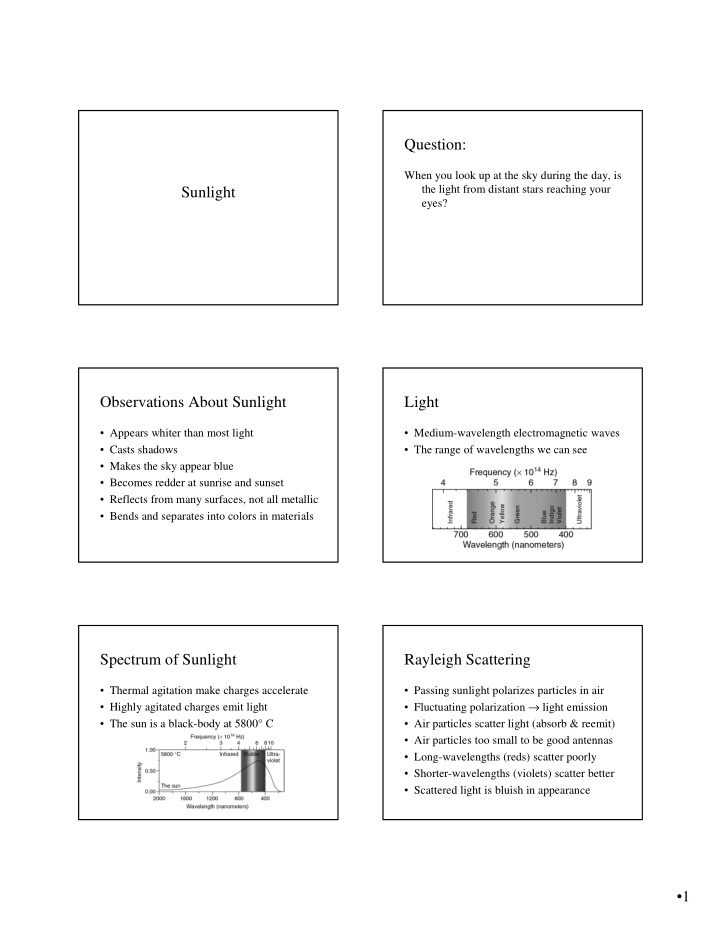



Question: When you look up at the sky during the day, is the light from distant stars reaching your Sunlight eyes? Observations About Sunlight Light • Appears whiter than most light • Medium-wavelength electromagnetic waves • Casts shadows • The range of wavelengths we can see • Makes the sky appear blue • Becomes redder at sunrise and sunset • Reflects from many surfaces, not all metallic • Bends and separates into colors in materials Spectrum of Sunlight Rayleigh Scattering • Thermal agitation make charges accelerate • Passing sunlight polarizes particles in air • Fluctuating polarization → light emission • Highly agitated charges emit light • The sun is a black-body at 5800° C • Air particles scatter light (absorb & reemit) • Air particles too small to be good antennas • Long-wavelengths (reds) scatter poorly • Shorter-wavelengths (violets) scatter better • Scattered light is bluish in appearance •1
Question: Refraction When you look up at the sky during the day, is • Polarization of matter delays light’s passage the light from distant stars reaching your • Light slows as it passes through matter eyes? • As sunlight slows, it bends – refraction – On slowing, bend is toward normal line • As sunlight speeds up, it also refracts – On speeding up, bend is away from normal line • Index of refraction – factor by which light’s speed is reduced Reflection Dispersion • Light polarizes different materials differently • Light’s speed in a material depends on color • In different materials, light has different • Violet light usually moves slower than red – speeds of travel • Refraction (bending) depends speed change – relationships between electric & magnetic fields • Violet light usually bends more than red • These changes lead to reflections – As sunlight slows, some of it reflects – As sunlight speeds up, some of it reflects Rainbows Interference • Refraction, reflection, and dispersion • Light from different paths can interfere – Constructive – fields are in same direction – Destructive – fields are in opposite directions • The two reflections from a film interfere • Different colors may interfere differently •2
Reflection of Polarized Light Polarized Sunlight • Angled reflection varies for polarized light • Most glare is horizontally polarized light • Fluctuating electric field parallel to surface • Polarizing sunglasses – large fluctuating surface polarization – block horizontally polarized light – big reflection – block glare from horizontal surfaces • Electric field perpendicular to surface • Much of the blue sky is polarized light, too – small fluctuating surface polarization – small reflection •3
Recommend
More recommend